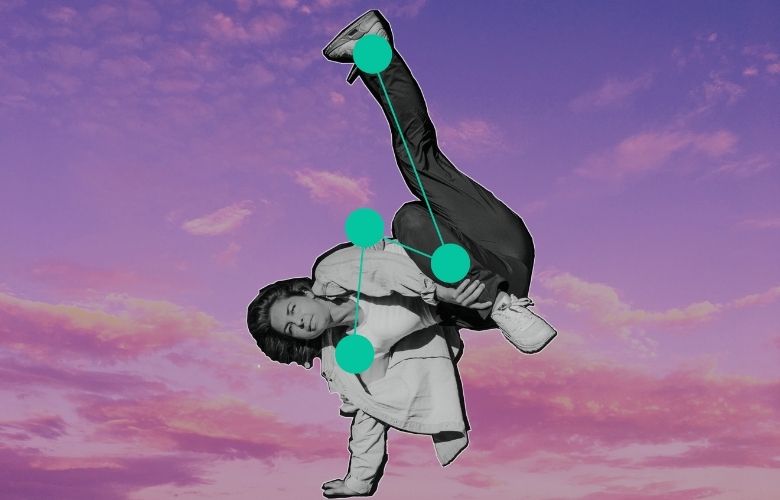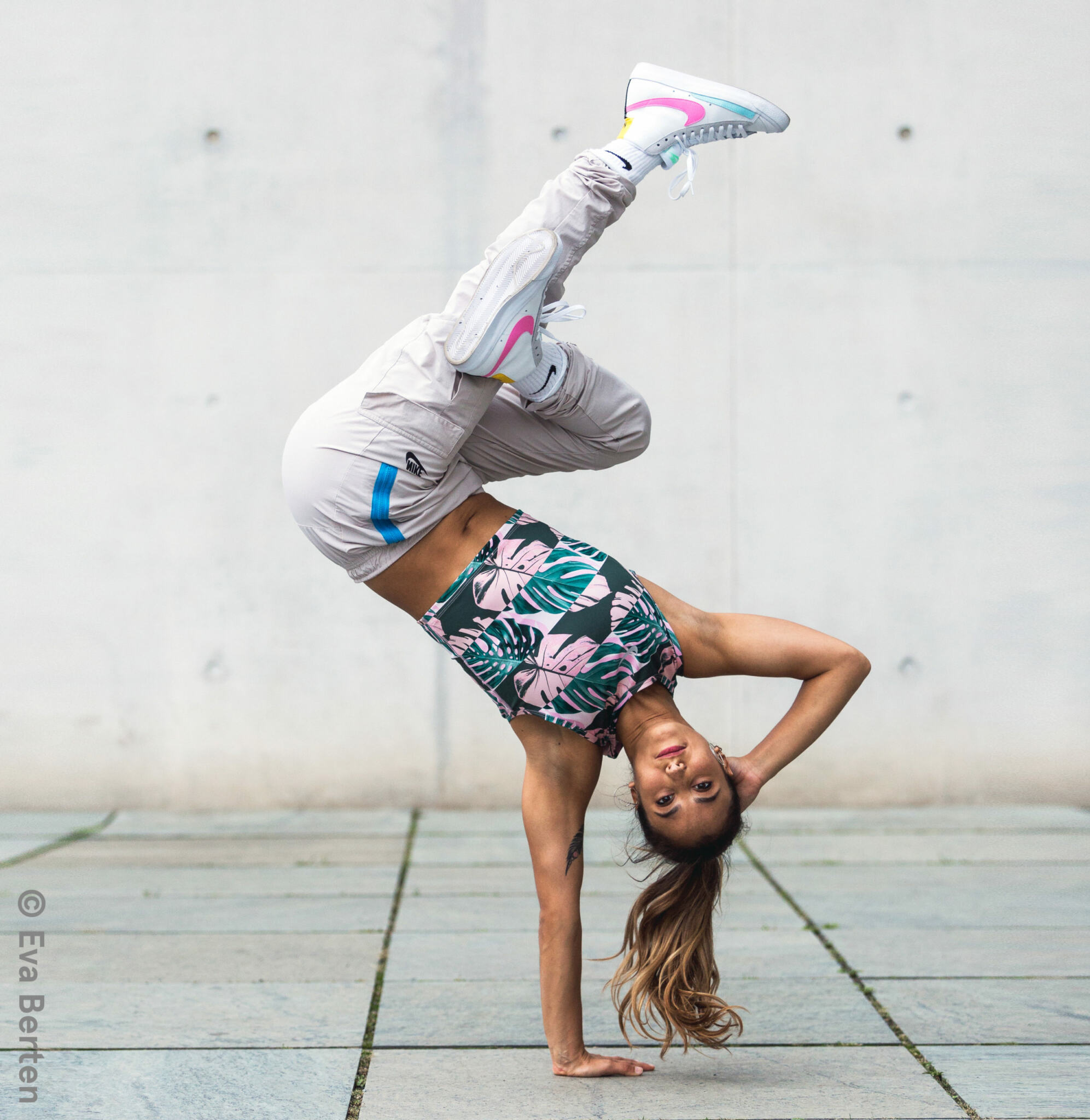
Sophie Lindner is the Head of Management at HE4DS (Health Education for Dancers) and Founder of the non-profit association Urban Dance Health. HE4DS stands for ‘Health Education for Dancers’ and is an integrative training, therapy and lifestyle method for the sustainable health care and performance enhancement of dancers. The non-profit association ‘Urban Dance Health’ carries out projects on dance and health education all around the world.
Sophie has been dancing since 1999 across contemporary, ballet, hip-hop, choreography and breaking styles. She’s a qualified physiotherapist, has an education in myofascial osteopathy, and has worked many years in clinics specialising in patients with chronic pain, as well as conducting scientific studies. She has dedicated herself to bridge the gap between dance, medicine and science by educating dancers and medical professionals to build an interdisciplinary network with dance and health experts around the globe.
Thank you for the great interest in our work. I am living in Stuttgart, Germany and since the pandemic situation started we are adapting to it and trying to do our best.
Now in the current pandemic situation dancers even need more help to deal with their daily struggles – mentally and physically. Due to the lack of continuity from dance training many dancers tend to over-train when they have the possibility of a training place. This is why many injuries occur. That’s why we have created the individual online coaching for medical and high performance advices for dancers.
The mission of HE4DS is educating dancers about their body, mind and soul for having an injury-free dance-career. We want to educate dancers so they can operate as their own personal therapist. And with the online coaching we are getting great feedback from the international dance scene.
We also switched to online education. Our mission statement is that it takes many HE4DS to keep all dancers healthy. That’s why we are educating dancers, dance educators and medical professional in online workshops, online classes and now also in online modules on our e-learning platform.
Only if many HE4DS join forces around the globe, dancers will be less injured, train healthier and perform better overall. This is why our vision is to spread the HE4DS method worldwide. We want to build an international network of dancers, dance educators, trainers, coaches, doctors, therapists and scientists to make an interdisciplinary exchange possible.
Breaking originally comes from the 70s from the Bronx in New York. It was created at the park jams when the Black and Latin communities got together outside.
Breaking is most easily categorised as a style of dance, but it more easily lends itself to the realm of sports than other styles because it is inherently competitive.
Back in the day, it was kids in the neighbourhood that battled each other for rounds and rounds. Now, it’s big-stage competitions and people flying all over the world, battling the best of the best.
Breaking competitions nowadays mostly consist of one-on-one battles, with three rounds apiece. Each battle features alternating bursts of steps, flips, spins, kicks and freezes in which one competitor breaks for about 30 to 45 seconds, and the other responds. A group of three to five judges then pick a winner who advances to the next round.
Compared with other dance styles breaking is involving 5 “legs” instead of just 2: as we stand, turn and twist on our head, arms and legs. That’s what makes Breaking so complex and at the same time opens up so many ways to explore and develop. And in Breaking we combine the physical demands of high-intensity dancing and acrobatics with the creative demands. Combinations of moves can be practiced, but there is still an artistic approach where many elements in your dance round are improvised.
For me personally – having studied many different dance styles – Breaking is the dance I can express myself and feel completely free at the same time.
I love to get loose and explore endless ways of movements on the floor as well as in the air. The freedom in this dance and the cultural values of peace, love and having fun is what I love the most.
There’s been quite some controversy inside the Breaking scene. It’s basically about making sure that we preserve the essence and the culture, and that it doesn’t get lost in the competitive grind as we continue to progress and make steps into the Olympics.

It means a lot to me that Breaking is going to be the first dance sport participating at the Olympic games. When I started to search for health information on Breaking, I learned a lot from the gymnasts. Soon I realised that there was much more money involved for research, training and medicine for the gymnastic athletes.
Being in the Olympics means a big step into getting more professionalised. But also it means getting closer towards a sporty competition area, although Breaking came from an only cultural background. Me as a dancer, I always love competing, going onto the stages and playing with the challenge to battle against my opponents.
The difficulty in Breaking is extreme, therefore I would rather call it an ‘Extreme Sport’ art over a high performance sport.
In Breaking we have no limits. Every year world records are broken and new movements that were thought to be impossible 10 years ago, become new standards.
Thus, it is a youth culture, being attractive for many young people all around the world. And having also included skateboarding and climbing, the Olympics want to be more modern and interesting. International Olympic Committee president Thomas Bach has praised the addition of the new sports as events that will make the Summer Games:
“more gender balanced, more youthful and more urban. We have had a clear priority and this is to introduce sports which are particularly popular among the younger generations. And also to take into account the urbanization of sport.”
I guess understanding Breaking is a high challenge because of its complexity. Understanding dance is much more difficult than comparing the seconds of a sprinter and knowing who won and why. The judging system is one great challenge our culture is dealing with. The task is to develop a judging system that is fair, transparent and less subjective.
I am sure that Breaking as a trend sport will inspire many people all around the world. Having us in the Olympic games puts our dance scene in a new light.
For the first time our image of “street kids” will be changed to the status of being athletes. This is a big step and door opener for many fields in the future.
I guess dance has been trying for years to become an Olympic sport; it would be a big step to become an Olympic discipline. Especially when we talk about Breaking in the Olympic games, a lot of fundamental research still has to be done. We are now evaluating studies with two German universities about the world’s best Breakers in order to further analyse Pro-B-Boys and Pro-B-Girls and their performance and to define the prerequisites that are necessary for becoming a high performance athlete.
Links:
Blog about the World Final Battle
Accessibility At The Smith Center Series: Part One
James “Fitz” FitzSimmons Interview: The Boys In The Band On Netflix


Michelle is a musician and composer from the UK. She has performed across the UK and Europe and is passionate about arts education and opportunities for women and girls.
Read Full Profile© 2021 TheatreArtLife. All rights reserved.

Thank you so much for reading, but you have now reached your free article limit for this month.
Our contributors are currently writing more articles for you to enjoy.
To keep reading, all you have to do is become a subscriber and then you can read unlimited articles anytime.
Your investment will help us continue to ignite connections across the globe in live entertainment and build this community for industry professionals.